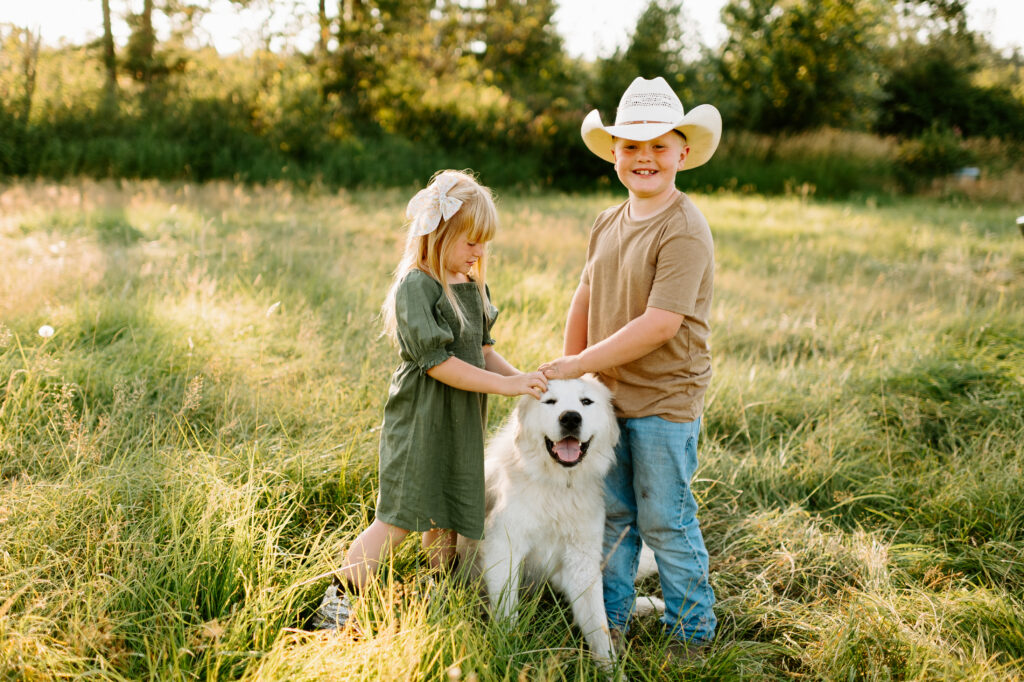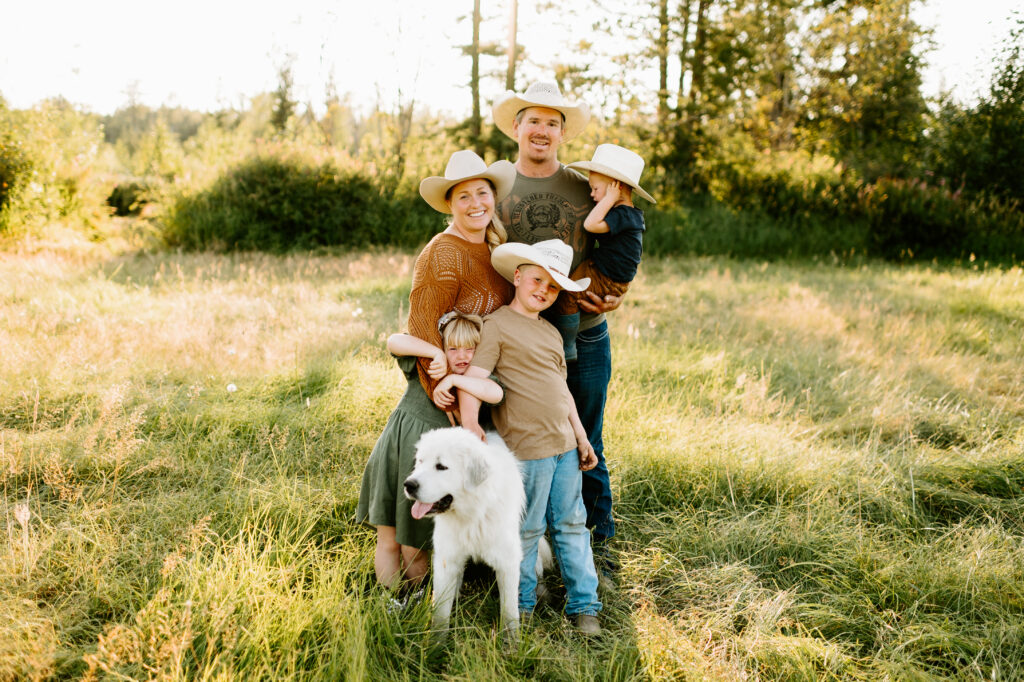
If you’ve ever visited us here at the ranch you’ve more than likely seen (and definitely heard!) our Great Pyrenees, Tuffy.
Tuffy is fiercely loyal to her people, larger than life, and we love her very much. But she’s not a pet. She’s our Livestock Guardian Dog, or LGD for short, and her role on the ranch is pretty much exactly that. She keeps our livestock safe from predators in a non-lethal way, which allows us to maintain a healthier relationship with the natural ecosystem around us.
What Makes LGDs Special
LGDs have been used as a means of protection from predators for centuries, and for good reason!
Typically, LGDs live full-time with their flock, herd, etc so their constant presence means they’re on watch 24/7 even when humans can’t be, which is especially helpful at night when predators like to emerge. You might also think that another benefit of an LGD is size, since they would be well-equipped to fight off any kind of predator that they would encounter. But the reality is that with Tuffy around, predators don’t even come close.
This is what makes livestock guardian dogs non-lethal. In our area, our biggest threats are eagles, hawks, ravens, and coyotes and Tuffy’s presence alone through scent, sight and barking is enough to keep them all at bay. Though we don’t want predators to attack our livestock, we recognize that these predators have an important role in the ecosystem and we prefer to live with them as peacefully as possible without causing unnecessary depredation.
Tips for Getting an LGD
If you’re thinking about getting an LGD there are a few things to consider.
Firstly, and I can’t stress this enough, it’s important to find a reputable breeder. LGDs can’t just be thrown out in the pasture right away as puppies – in fact, they should stay with their mothers until 16 weeks at least, which allows them to learn the ropes from more experienced dogs and be properly introduced to livestock before going to their new home. You should also be sure that the breeder you choose to work with has exposed your dog to the correct kind of livestock. For example, if you’re looking to get an LGD to protect your flock of sheep, make sure that they’ve been raised around sheep and not exclusively goats. The breeder should also be certifying each puppy for OFA (a distinction that shows they haven’t inherited any eye diseases) and checking for hip and elbow health, things that larger dogs like this are prone to having issues with.
You’ll also want to consider which breed of LGD is right for you. Some common ones here in the U.S. are the Great Pyrenees, Akbash, Maremma, and Anatolian Shepherd and each have different traits. You’ll want to do your research, reach out to breeders, and determine the best fit for your farm or ranch.
Lastly, make sure that an LGD is the right choice for you. Above all, these are working dogs, which means that barking and sometimes wandering is the norm as they protect their livestock which can be an issue if you live on a smaller property and/or in close proximity to your neighbors.

Resources
The Texas A&M AgriLife Livestock Guardian Dog Program is my favorite LGD resource to recommend. It has lots of great fact sheets, articles and case studies to reference plus YouTube videos and more!
PLEASE COMMENT BELOW